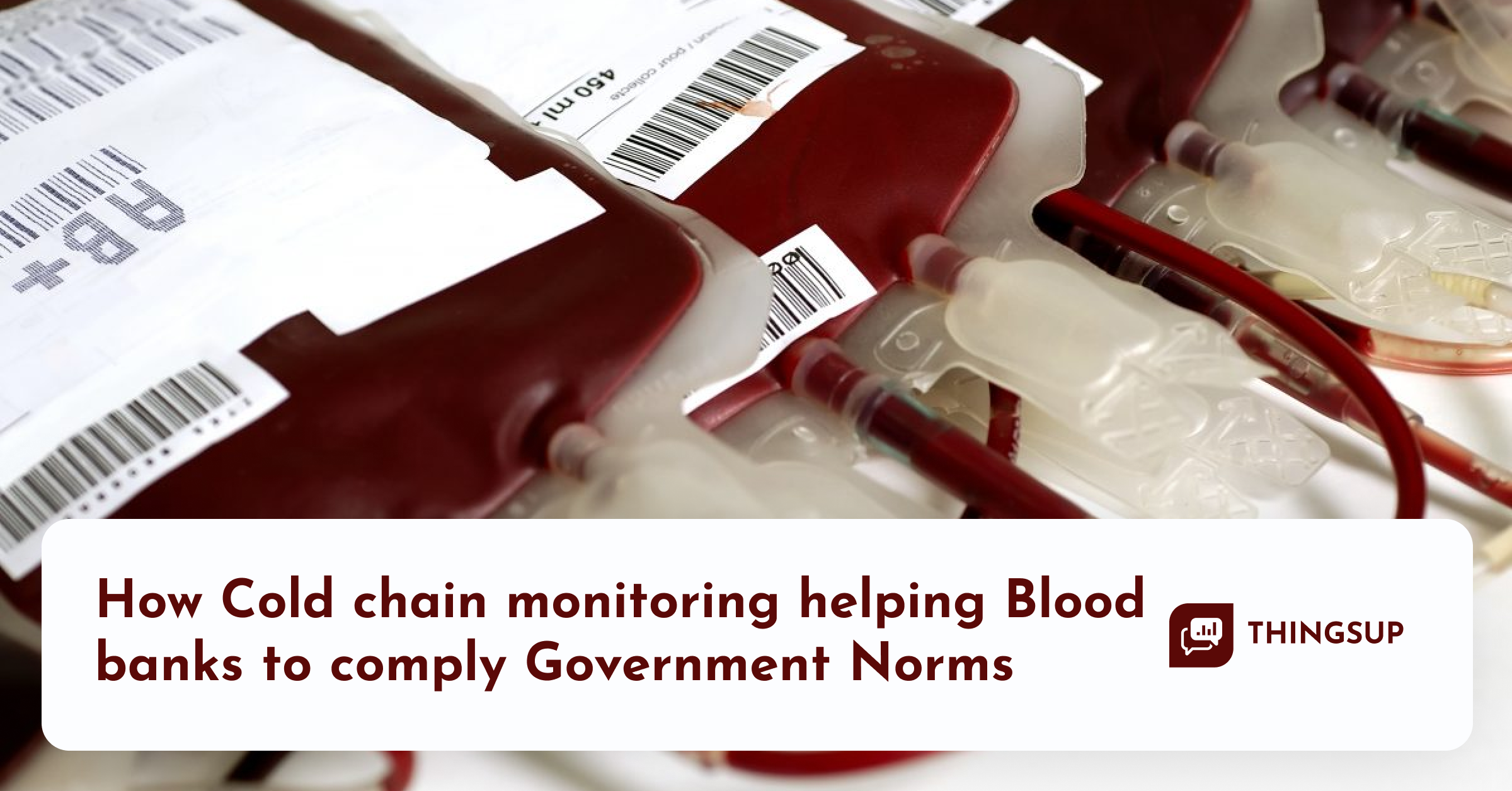In the sector of healthcare, ensuring the safety and integrity of blood and blood products is of paramount importance. Blood banks play a vital role in this process, but the journey from donor to recipient is fraught with challenges, especially when it comes to maintaining the required temperature conditions. The recommended temperature is 2-6 ℃ or in some cases 2-10 ℃. Maintaining such conditions need constant monitoring. Enter Cold chain monitoring, a technological solution powered by IoT sensors and asset management system software that is revolutionizing the way blood banks comply with government norms and safeguard the lives of countless patients. In this blog, we will explore the significance of cold chain monitoring, the role of IoT sensors, and real-time examples of its impact in blood banks.
Understanding Blood Banks: How it works?
Blood banks serve as lifelines, providing critical resources that save lives in emergencies, surgeries, and medical treatments. However, the path from donor generosity to patient treatment is not without hurdles. The challenge of maintaining optimal temperature conditions throughout storage and transportation is evident in the staggering statistics. An estimated 6.6 million blood donations are discarded globally every year due to temperature deviations, compromising the availability of life-saving blood products.
Government Norms and Cold Chain Management in Blood Banks
Government regulations are designed to ensure the safety and efficacy of blood products. For instance, the U.S. Food and Drug Administration (FDA) has stringent guidelines for IoT temperature monitoring during the storage and transportation of blood components. These regulations are in place to prevent bacterial growth, maintain the potency of blood products, and ensure patient safety.
The Cold Chain Monitoring in Blood Bank
Cold chain monitoring refers to the meticulous management of temperature-sensitive products throughout their storage and transportation process. In the context of blood banks, this system ensures that blood products such as whole blood, platelets, and plasma remain within specified temperature ranges, maintaining their efficacy and preventing contamination. The implementation of cold chain monitoring systems minimizes the risk of bacterial growth, maintains the potency of blood components, and adheres to stringent regulatory requirements.
IoT Sensors in Cold Chain Monitoring
At the core of effective cold chain monitoring lie IoT sensors. These smart devices are equipped with temperature tracking capabilities and are strategically placed within refrigeration units, storage rooms, and transportation vehicles. IoT sensors continuously monitor temperature levels and relay real-time data to a centralized software platform. This platform enables blood bank personnel to monitor conditions remotely and receive immediate alerts in case of temperature deviations.
For instance, where a refrigeration unit storing blood components experiences a temperature spike. IoT sensors detect this change and promptly send an alert to the responsible staff members. By taking swift action, the blood bank can prevent spoilage and ensure that only safe and viable blood products are distributed to patients in need.
Benefits of using a cold chain monitoring system
There are many benefits of using an Asset management system software to monitor your supply chain. They are:
- Real-Time Monitoring:
Cold chain monitoring systems offer real-time insights into temperature conditions. This allows blood bank managers to detect anomalies immediately and take corrective measures to prevent any compromise in blood product quality.
2. Alerts and Notifications:
IoT sensors trigger alerts and notifications whenever temperature thresholds are breached. This proactive approach minimizes the risk of using compromised blood products and ensures compliance with government regulations.
3. Data Logging and Analytics:
These systems maintain a comprehensive record of temperature data over time. This historical data is crucial for audits, compliance reporting, and identifying trends that can improve overall cold chain management.
4. Remote Access:
Asset management system software associated with cold chain monitoring allows authorized personnel to access temperature data remotely. This is particularly valuable for blood banks with multiple locations or those that require real-time oversight during transportation.
Real-Time Examples and Statistics:
- In the United States, the Food and Drug Administration (FDA) mandates strict temperature guidelines for blood storage and transportation. Around 10% of blood products are discarded annually due to temperature breaches, highlighting the need for robust cold chain monitoring systems.
- A case study involving a blood bank in Africa demonstrated that the implementation of a cold chain monitoring system resulted in a 35% reduction in wastage and a 20% increase in the availability of safe blood products.
- According to the World Health Organization (WHO), unsafe blood transfusions can lead to adverse reactions, infections, and even death. Cold chain monitoring systems significantly contribute to reducing these risks by ensuring the integrity of blood products.
Why choose Thingsup Track?
Thingsup Track is a comprehensive solution. We understand all the requirements of the blood bank initially. Connecting with the nearest hospitals within the least possible time is the aim. Our cold chain monitoring system aids in streamlining and managing all steps of the cold chain.
1. Real-time monitoring lets you identify weak links in your supply chain.
2. Alerts you whenever the system deviates from optimal conditions.
3. Saves cost by finding optimal routes automatically in real-time.
4. Prevents the waste of blood bags due to poor management of the supply chain.
5. Supports the decision-making process by providing enough data about the transport.
While there are many other benefits of using Thingsup Track, these are the ones that matter to your blood cold supply chain.
Conclusion
Cold chain monitoring system has become essential tools of a blood bank’s supply chain. Opting for such a solution will help you easily comply with the government guidelines. Moreover, you can also save lives with such an asset management system software by your side.






